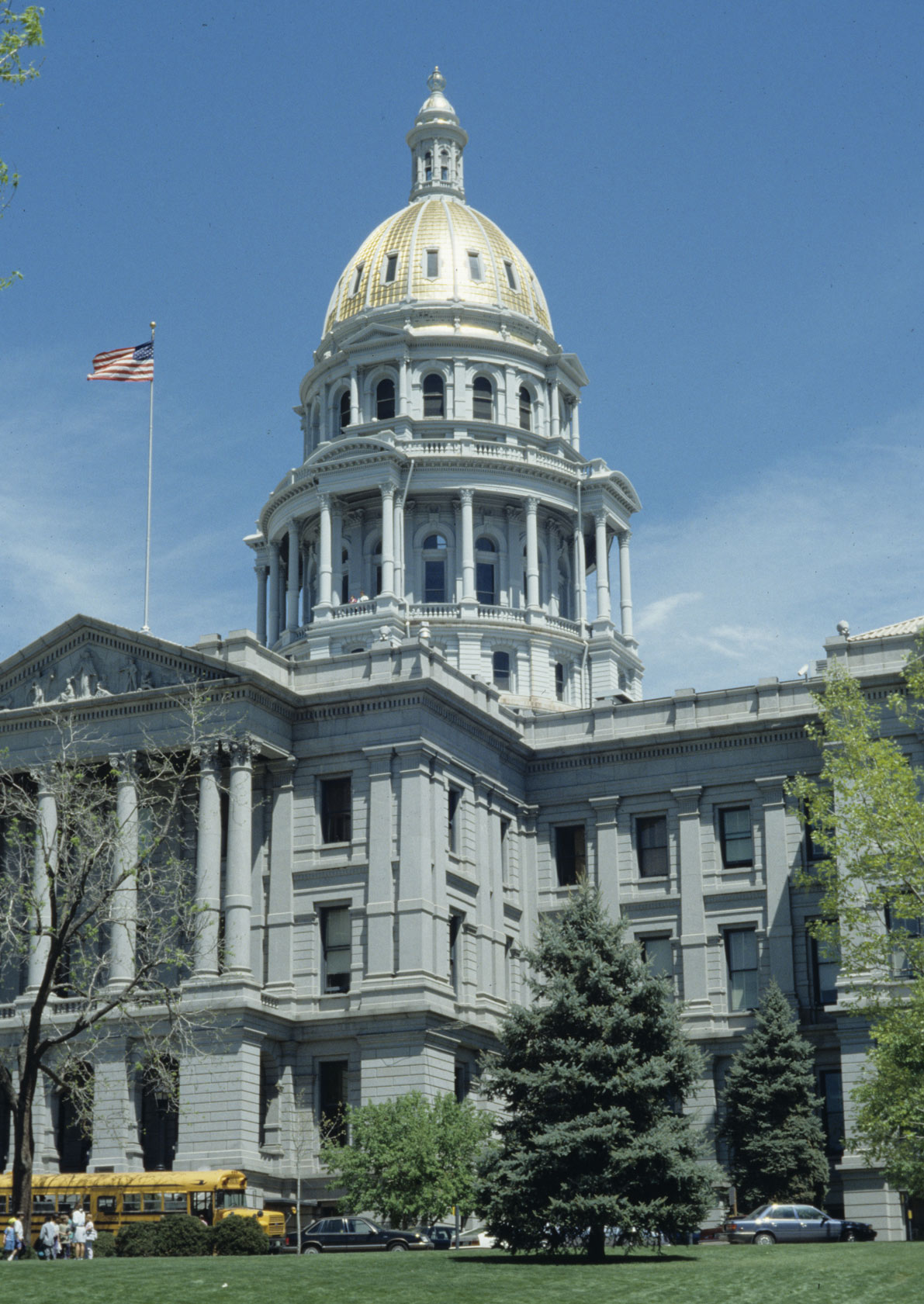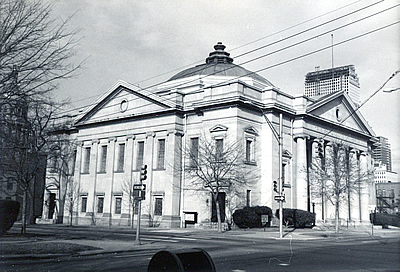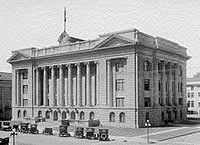Classical Revival
Classical Revival signaled a return to the classical forms of Greece and Rome following the elaborately decorated and picturesque styles of the Victorian period. Dating from the late 1890s through 1920, Classical Revival represents a more subdued expression than the ostentatious or grandiose Beaux Arts style and is evident mainly on large institutional buildings in Colorado.
Characteristics of Classical Revival include colossal porticos, large columns, pilasters, pedimented windows, and domes. The buildings are generally masonry structures of monumental proportions, using terra cotta, brick, and stone materials.
Often, classical details such as large column porticos are combined with Colonial Revival elements on residences, leading to some confusion as to the style. To avoid this problem, residences with classical elements are considered examples of Colonial Revival and only large institutional buildings with classical details are classified as Classical Revival.
Common elements:
- large columns
- dome
- portico
- pediments
- pilasters
- Ionic columns
- attic story
- dentils
- classical frieze



